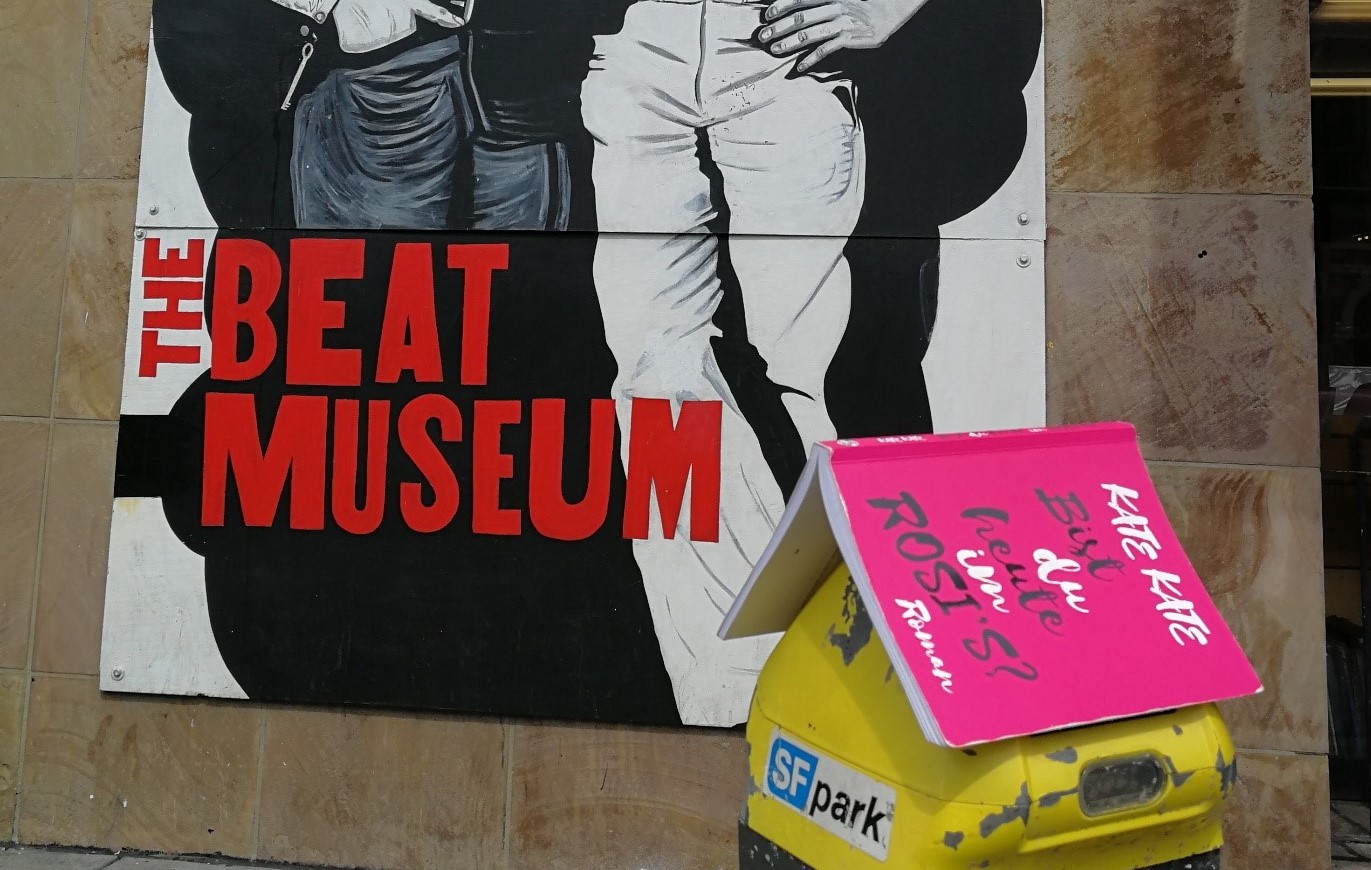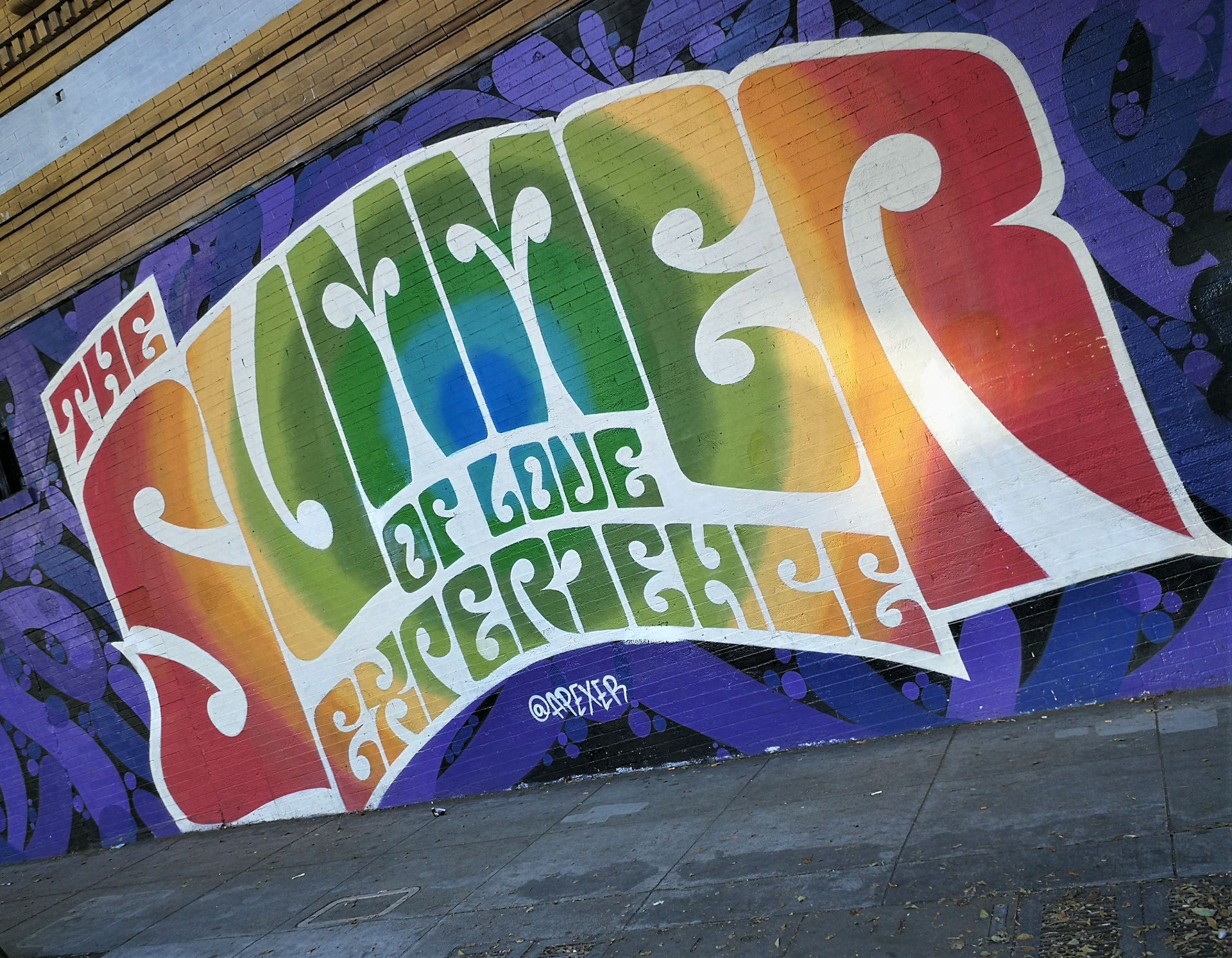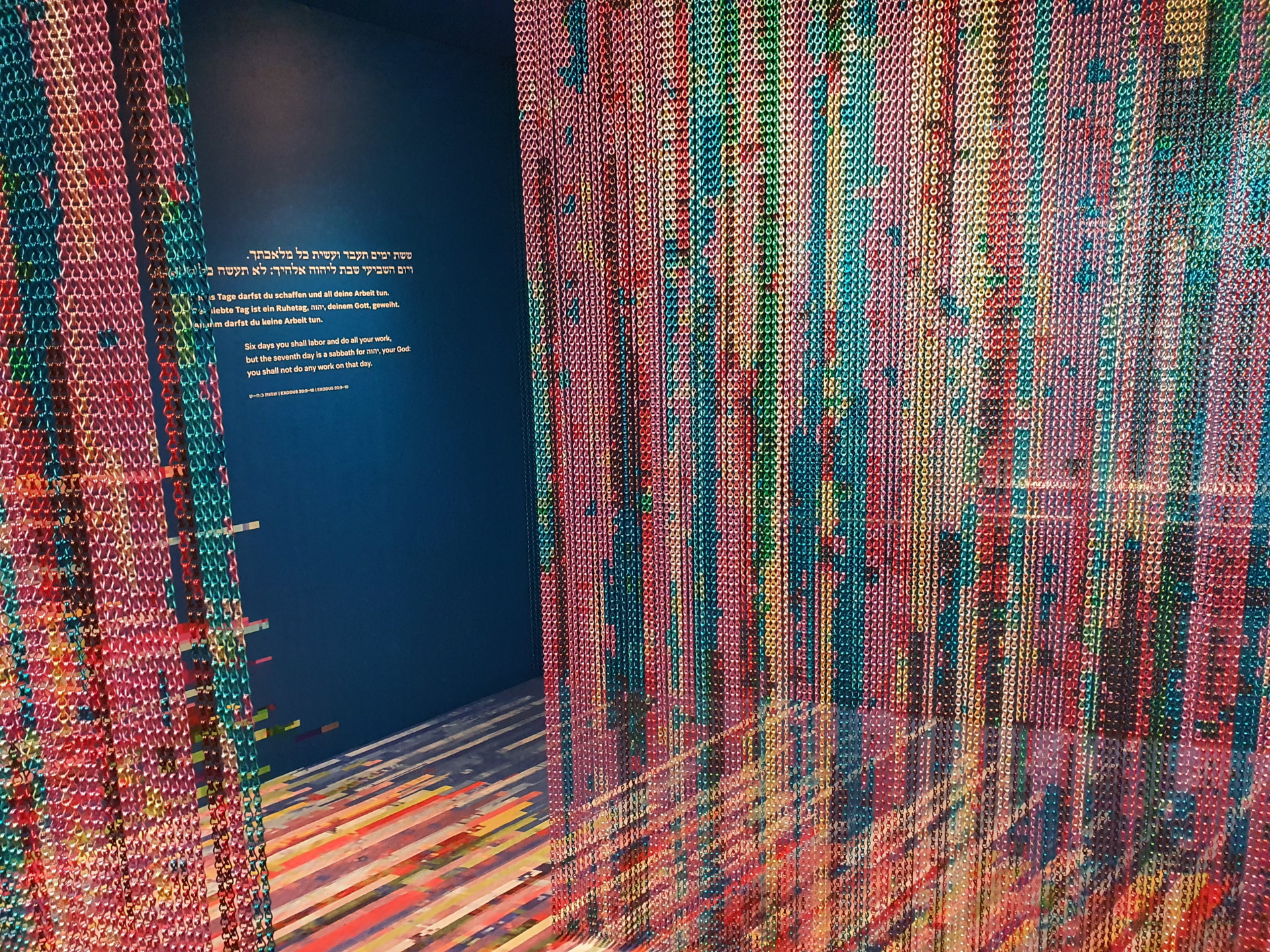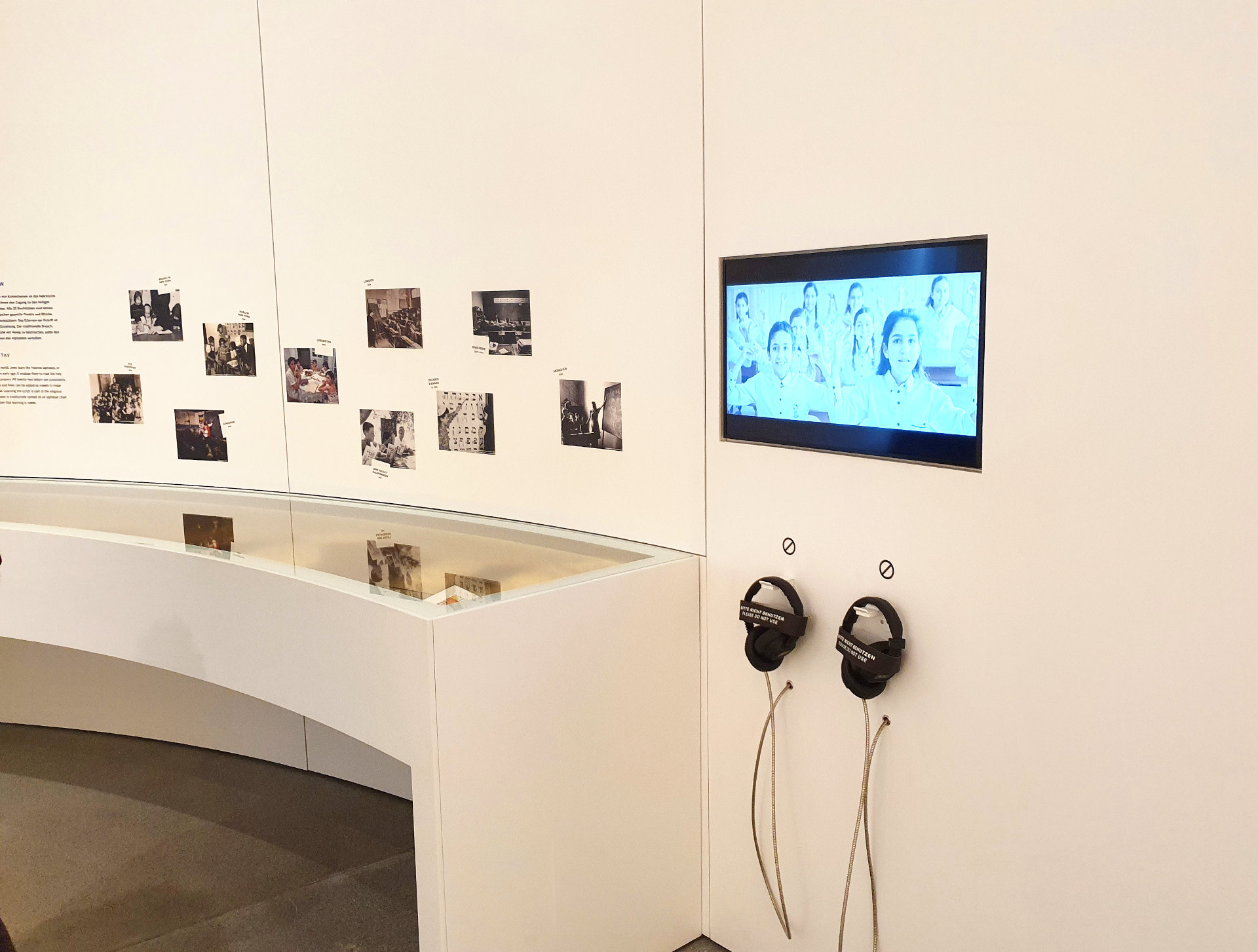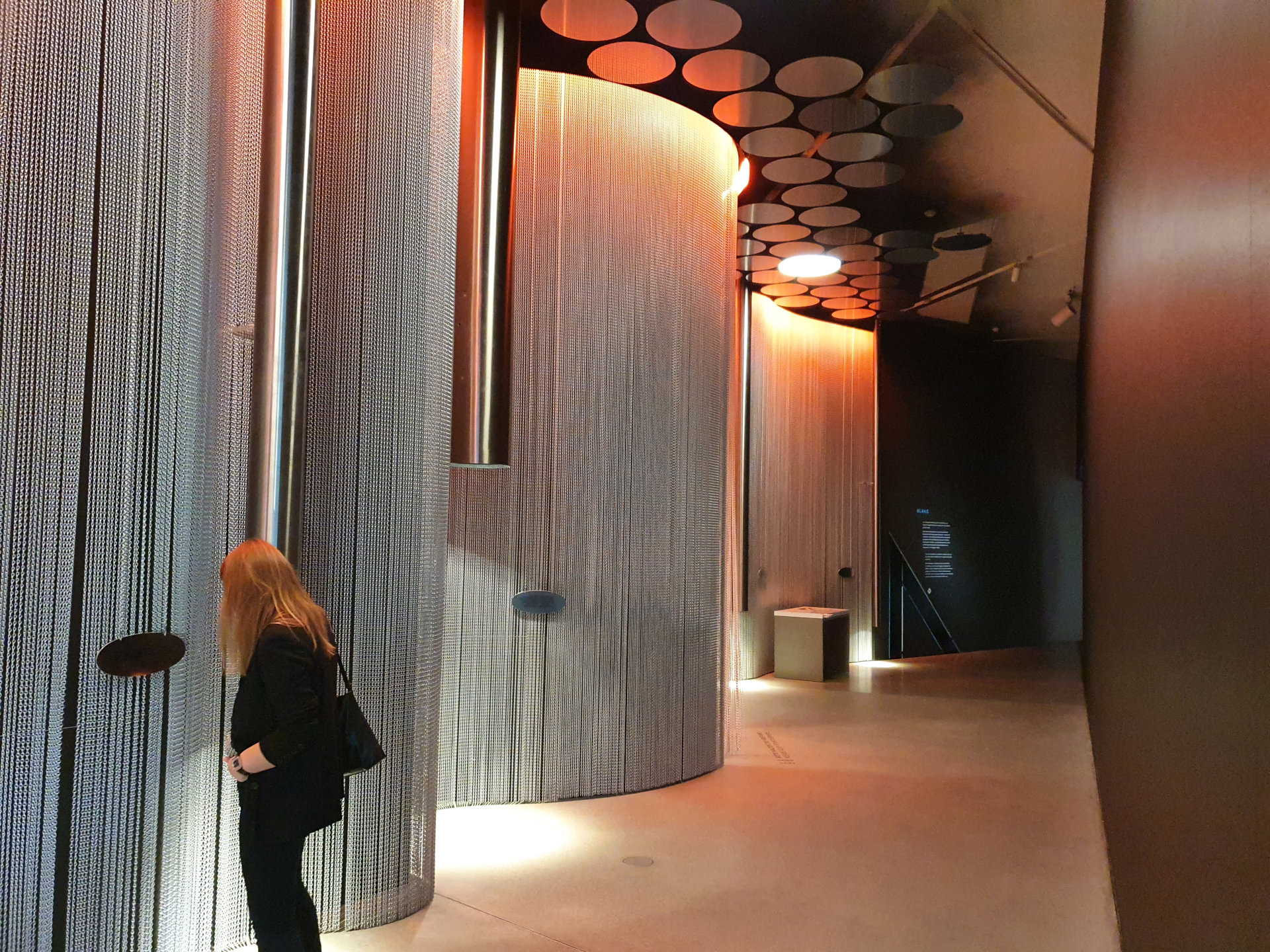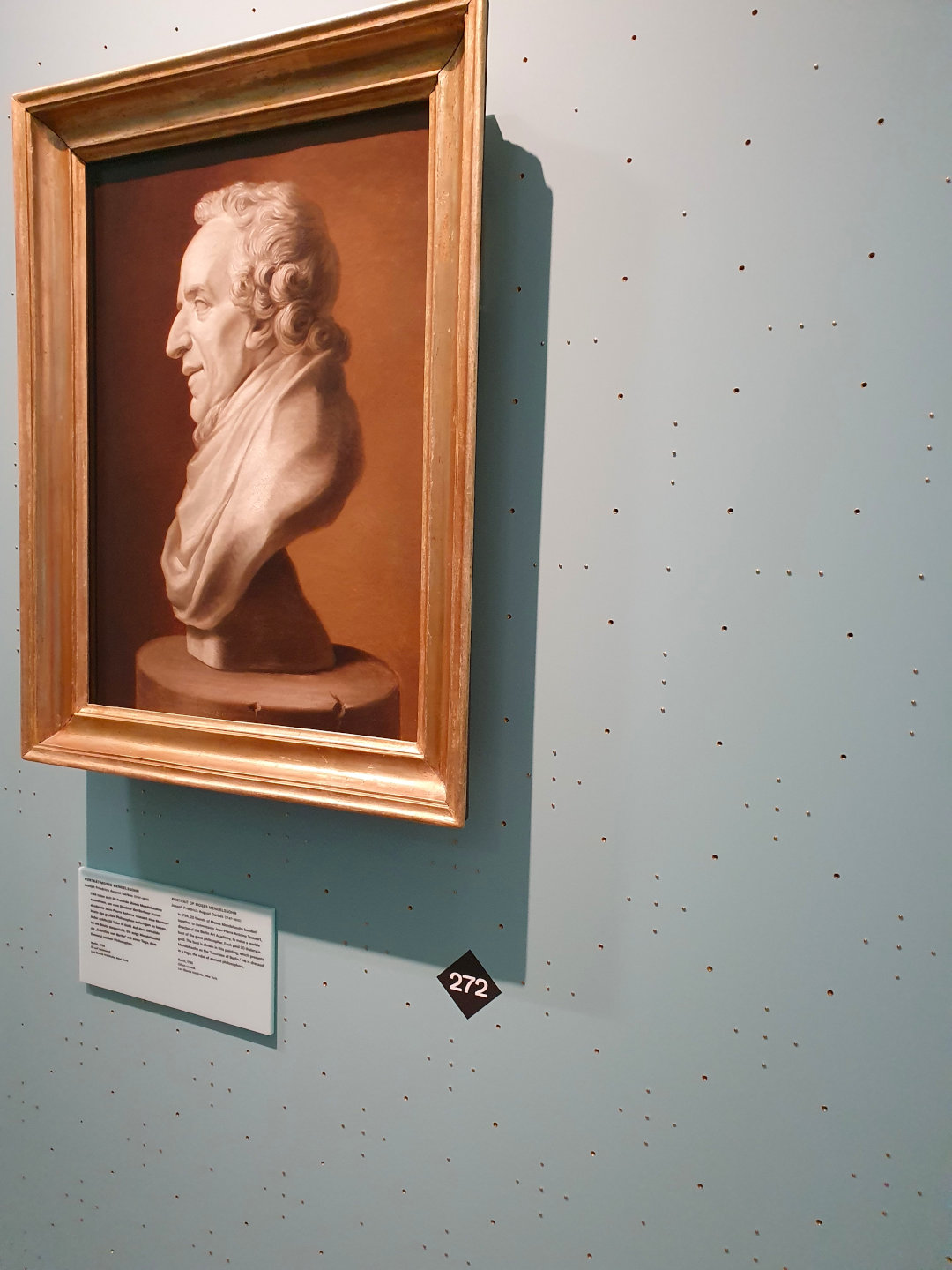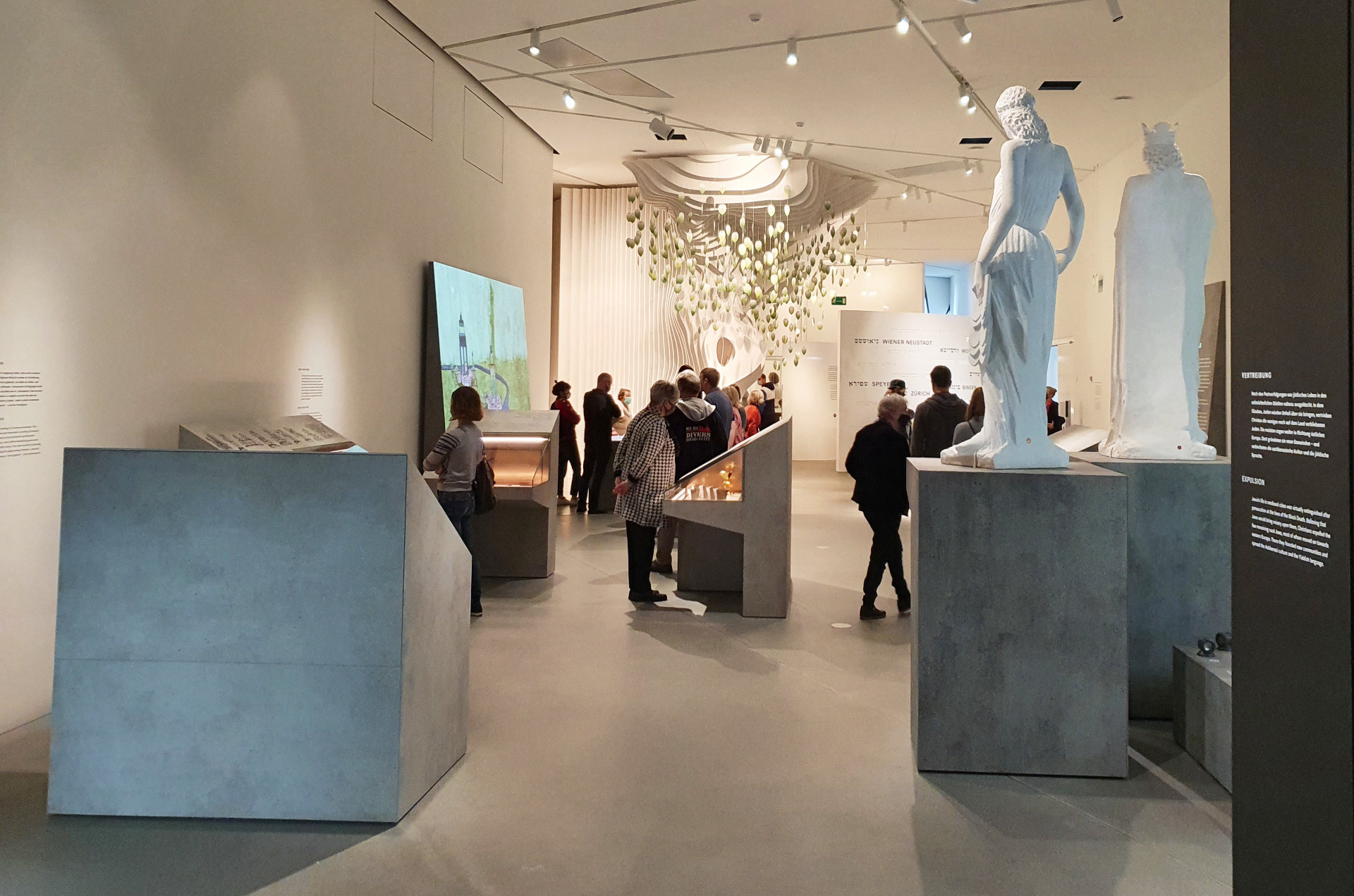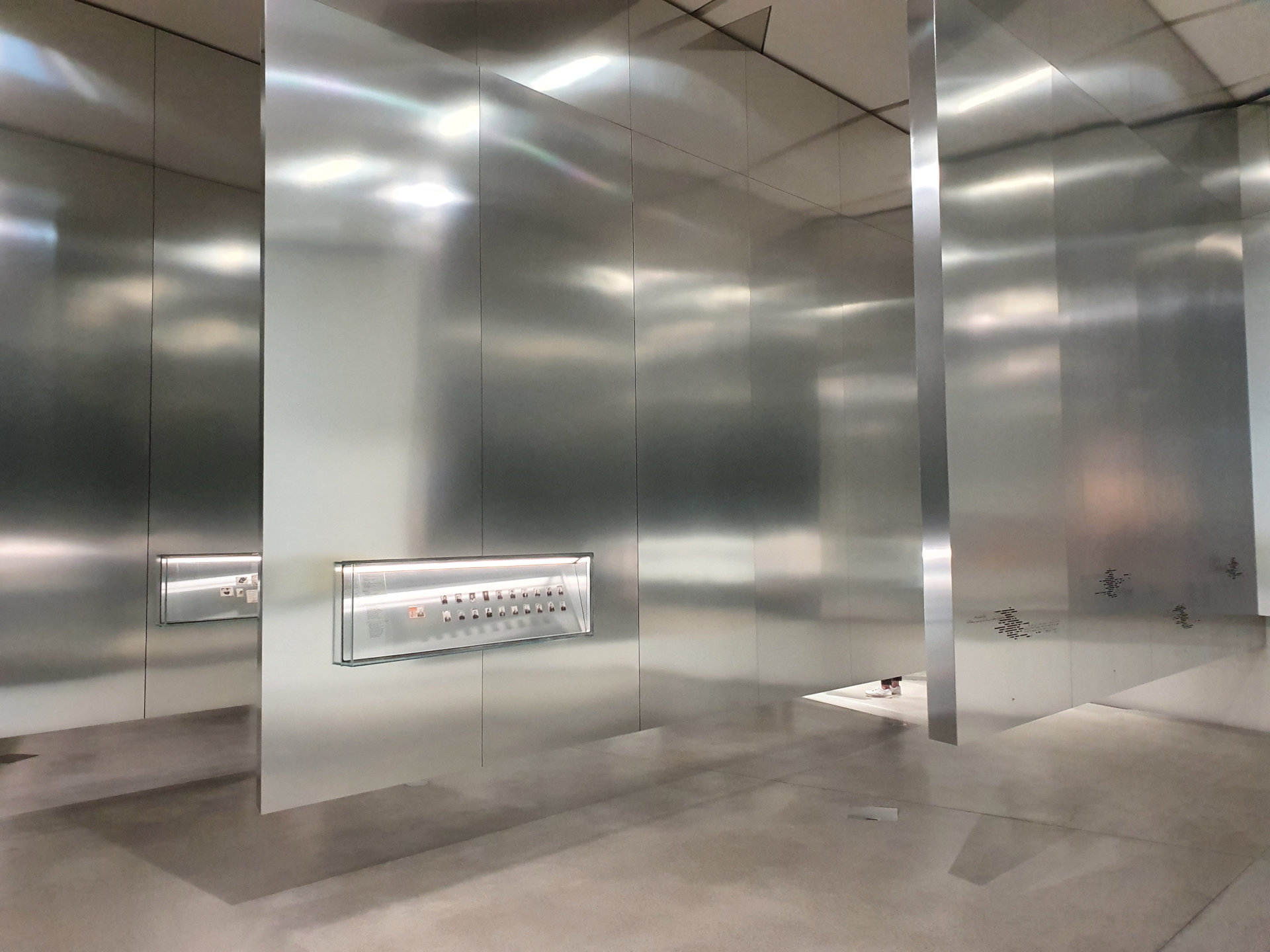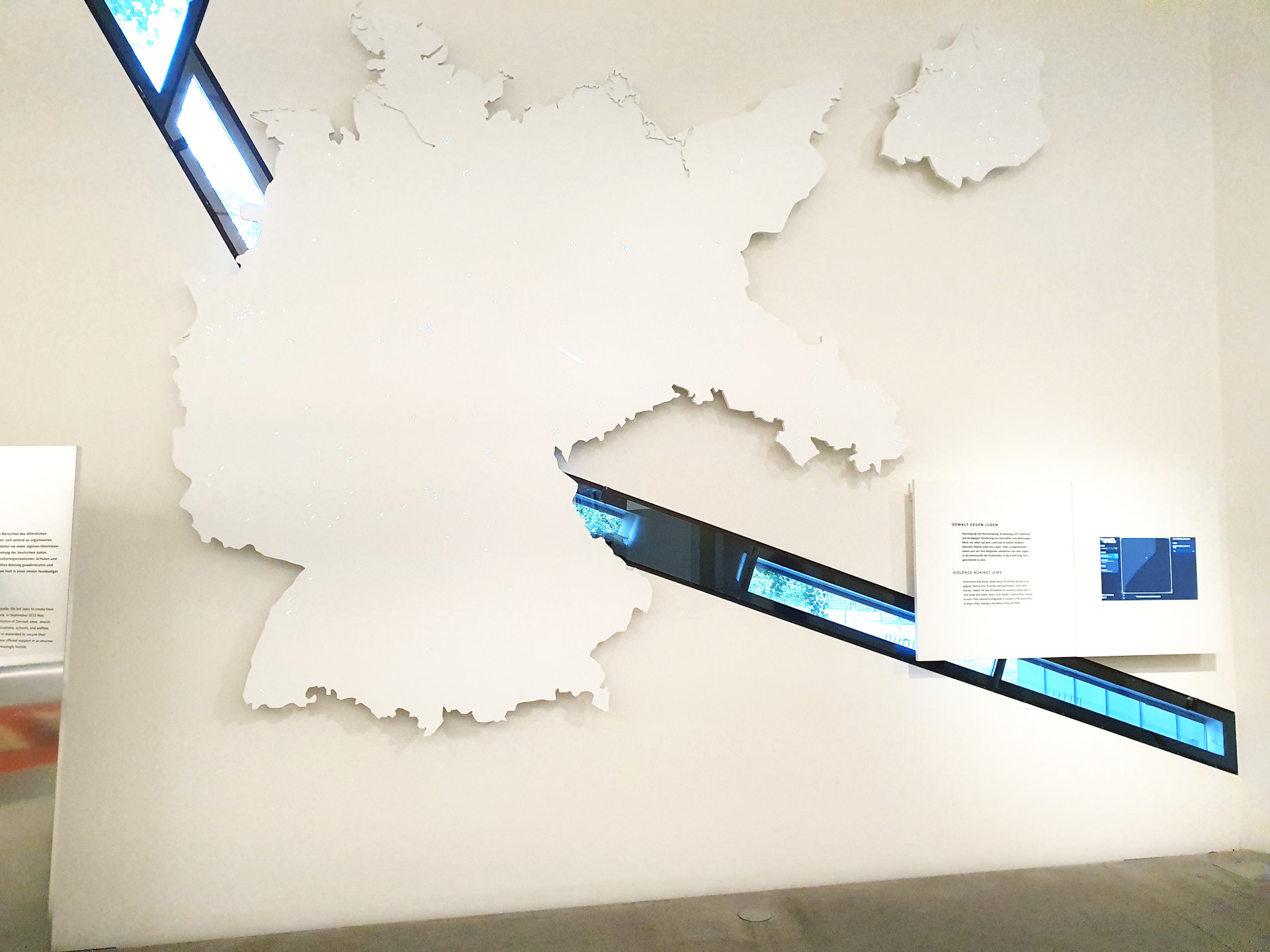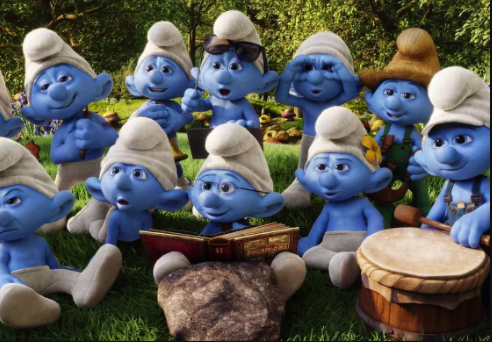Gastbeitrag aus San Francisco! Kate Kate verliebt sich in die Beatniks (German version)
Willkommen beim neuesten Gastbeitrag aus der globalen Museum Lovers Community! Diese Gastbeiträge bilden eine Art Mini-Tour mit Expert*innen, die ihre Begeisterung für gewisse musealische Themen teilen wollen. Lass uns also unseren Guide kennenlernen:
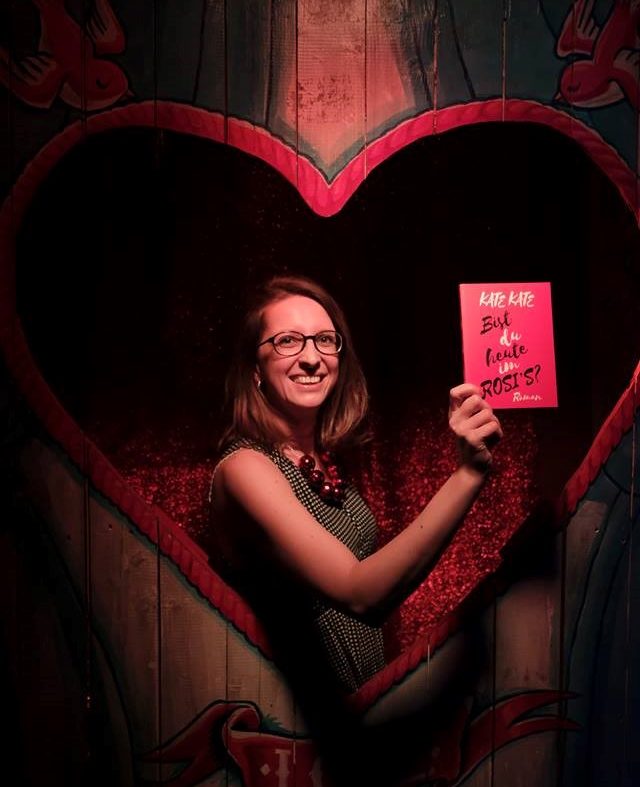
Meet Kate Kate
Kate Kate schreibt. Mit kurzen Artikeln und Texten für die Schülerzeitung über Musik fing alles an. Jahrzehnte später und nach vielen durchtanzten Nächten entstand ihr erster Roman. Ihr ausuferndes Interesse für Musik und Bücher stillt sie nicht nur in Berlin, sondern auch auf ihren Reisen.
Foto: André Fischer
Ich wollte den Pazifik sehen. Ich wollte an die Westküste der USA reisen. Im September 2019 habe ich mir diesen Traum erfüllt. Meine musikalisch-literarische Reise führte mich über Seattle, Olympia, Aberdeen, Seaside und Portland nach San Francisco. The Summer of Love Experience. Ich erlebte meinen eigenen Summer of Travel Experience, in einem einzigen Monat. Als ich in den Flieger nach Seattle stieg, ging ich fest davon aus, die Route wie vorab geplant, abzurocken. Doch der Weg ist das Ziel. Die Ziele hatte ich in einem kleinen Notizbuch aufgelistet, den Weg gab das Navi vor.
Auf einmal befand ich mich auf der Interstate 5. Welcome to California. Am ersten Point of View hinter der Bundesstaatengrenze Kaliforniens schaute ich in die Landschaft und stellte mir die Trapper vor, die ab 1843 in den Planwagentrecks durch die Prärie zogen. Auf der Suche nach neuem Land und Gold. On the road. Um es mit Jack Kerouacs Buchtitel zu sagen. Ich suchte die Wurzeln der Beatliterat*innen und fand sie im Beat Museum in San Francisco.
Der Beat bestimmte schon in meinem Teeniezimmer den Lärmpegel. Wie rebellisch, wie provokant, wie aufmüpfig. Ich wusste, was ein Beat ist und was er auslöst. Ein Wort, das zunächst musikalisch die Wände wackeln ließ. Der lyrische Beat faszinierte mich erst Jahre später als ich mich mit dem Begriff „Beat“ im Studium auseinandersetzte. Denn bevor die musikalische Beatmanie in den 1960er Jahren ihren Höhepunkt erreichte, lärmten Autor*innen einer früheren Beat-Generation auf dem Papier. Die Beatautor*innen gehörten einer eher literarischen als politischen Nachkriegsgeneration an, die neue Ausdrucksweisen schuf, die Sprache der Gosse und Slang-Wörter nutzte, Werke unter Einfluss bewusstseinserweiternder Substanzen schrieb und das auch noch bestätigte. Gedichte und Bücher beschäftigten wegen angeblicher Obszönitäten Rechtsanwälte und Richter. Ich war nicht nur von ihren Werken fasziniert, sondern auch von ihrer Entstehungsgeschichte. In welchen Bars New Yorks oder San Franciscos lernten sie sich kennen? Welche Gedanken und Philosophien ließen sie literweise Bier und Wein trinken? Welcher Küchentisch wurde permanent in Beschlag genommen, um sich gegenseitig zu beeinflussen? Und wie spannend muss es gewesen sein, mit ein paar Münzen in der Tasche durch die USA der 1950ger Jahre zu reisen?
Das Museum wurde 2003 von Jerry und Estelle Cimino in Monterey gegründet. Nachdem die Ciminos John Allen, den Sohn der Beatpoeten Neal und Carolyn Cassady kennenlernten, beschlossen sie, die Geschichte der Beat-Generation jungen Leuten näher zu bringen. Jerry und John stellten eine Show auf die Beine und reisten in einem Airstream-Wohnmobil, dass sie das Beat Museum on Wheels nannten, von Küste zu Küste, von Bundesstaat zu Bundesstaat. 2006 stoppten sie ihr Beatmobil im Viertel North Beach in Frisco. In den 1950er Jahren entstand in North Beach die literarische Bewegung der Beat-Generation mit seinen berühmten Zeitgenossen Jack Kerouac, Allen Ginsberg, Gregory Corso, William Burroughs, Lawrence Ferlinghetti und vielen anderen. Das Beat Museum on Wheels wurde vorübergehend in der Live Worms Gallery (Grant Avenue) eingerichtet und nach einem kurzen Umzug in The Cannery at Fisherman’s Wharf zog das Museum letztendlich in die Räume am 540 Broadway.
Ich startete mit einem Kaffee in der Hand in den Tag und absolvierte ein vormittägliches Fitnessprogramm auf dem Weg zum Museum. Hügel rauf, Hügel runter und nach 20 Minuten empfing mich das Museum mit einem übergroßen Wandplakat, auf dem sich die Freunde Neal Cassady und Jack Kerouac lässig brüderlich auf die Schultern klopfen.
Im Museumshop kaufte ich ein Ticket zu einem äußerst moderaten Preis und ging durch das kleine Drehkreuz. Im Erdgeschoss und in der ersten Etage ist eine Vielzahl an Beat-Memorabilien ausgestellt, darunter Originalmanuskripte, Briefe, Notizzettel, Postkarten, Bücher, Schreibmaschinen, Fotografien oder Gingsbergs Orgel. In einem separaten schmalen Raum schaute ich mir zunächst einen Dokumentarfilm über die Beat-Literat*innen an, der in Endlosschleife vorgeführt wird.
Schriftstellerinnen der Beat-Generation wie Diane Di Prima, Jan Kerouac, Carolyn Cassady, Anne Waldman oder Joyce Johnson werden in mehreren Vitrinen vorgestellt. Frauen, die in den Vereinigten Staaten der Nachkriegsjahre mehr von ihrem Leben erwarteten. Sie wollten nicht als zarte Wesen wahrgenommen werden, die verheiratet und wohlsituiert in einem Vorort lebten. Jahrzehnte vor den feministischen Bewegungen der späten 1960ger und 1970ger Jahre ließen sie sich nicht von den strikten gesellschaftlichen Normen einfangen und in Rollenbilder zwängen. Die Beat-Literatinnen waren sozusagen die Vorkämpferinnen, die die Brücken zur nächsten Generation bauten.
Eine alte Schreibmaschine meiner Mutter, eine Urania-Piccola, stand jahrelang als Dekoration im Wohnzimmer. Niemand tippte darauf. Als ich das Alphabet beherrschte, hämmerte ich auf ihr rum. Der Klang, wenn die Typenhebel auf das Papier aufschlugen, hörte sich genauso schwer an, wie es das Herunterdrücken der Tasten war. Die Urania wog gefühlt 1.000 kg. Die Beatniks tippten unter anderem auf einer Underwood Typewriter Nr. 5 oder L.C. Smith Corona. Die Schreibmaschinen waren reisetauglich, meine nicht.
Die Bild- und Objektbeschriftungen, die an den Wänden hängen und in den vielen Vitrinen liegen, sind wunderbar zusammengestellt, die Texte informativ und auf den Punkt. Glücklicherweise erreichte das Aufnahmevermögen meines Smartphones die volle Auslastung und hielt mich so davon ab, jedes Schild und jedes Ausstellungsstück zu knipsen.
Das Beat Museum ist ein kleines Juwel und hat eine vergangene, viel besprochene und beschriebene Zeit mit vielen seiner Vertreter*innen hervorragend eingefangen. Es wird eine Generation festgehalten, die einen gesellschaftlichen Wandel, eine soziale und sexuelle Befreiung einläutete und nachfolgende Generationen beeinflusste. Ich empfehle, sich für das kleine und sehr intime Museum so viel Zeit wie möglich zu nehmen. Die Beat-Generation war nur eine kleine Gruppe von Autor*innen und Künstler*innen, die ein Bohèmeleben ausprobierte, sich „Beatniks“ oder auch „Hipster“ nannten, Jazz hörte, mit Drogen experimentiere und neue Lebensweisen einschlug. Eine künstlerische Bewegung mit einer hohen Strahlkraft, die in dem wunderbaren Museum großartig vorgestellt wird.
Guest Post San Francisco! Kate Kate falls in love with Beatniks
Welcome to the latest in a series of Guest Posts from museum lovers around the world! Each post is like a mini-tour with an expert on a museum topic they’re excited about. So let’s get to know our guide:

Meet Kate Kate
Kate Kate writes. It all began with short articles and texts about music for the school newspaper. Decades later and after many nights of dancing in several clubs, she wrote her first novel. She cultivates her overflowing interest in music and books not only in Berlin, but also on her travels.
Photo: André Fischer
I wanted to see the Pacific Ocean. I wanted to travel to the West Coast of the USA. In September 2019 I made this dream come true. My musical and literary journey took me via Seattle, Olympia, Aberdeen, Seaside and Portland to San Francisco. The Summer of Love Experience. I had my own Summer of Travel Experience, in a single month. When I boarded the plane to Seattle, I assumed that I would definitely ‘rock‘ the route as I had planned. Doch der Weg ist das Ziel. That means “It’s not where you’re going, it’s how you get there.” I had listed the destinations in a small notebook; the route was determined by the navigation system.
All of a sudden I found myself on the Interstate 5. Welcome to California. At the first lookout point behind the state border of California I gazed into the landscape and imagined the trappers, who moved through the prairie in the wagon trains from 1843 on. In search of new land and gold. On the road. To use Jack Kerouac’s book title. I was searching for the roots of the beat authors and found them in the Beat Museum in San Francisco.
When I was a teenager, the beat already dominated the noise level in my room. How rebellious, how provocative, how defiant. I knew what a beat was and what it triggered. A word that made the walls shake – musically, at first. Only years later was I fascinated by the lyrical beat when I began to deal with the term “beat” in my studies. Because before the musical beat mania reached its peak in the 1960s, authors of an earlier beat generation made noise on paper. The beat authors belonged to a post-war generation that was more literary than political, created new ways of expression, used the language of the streets and slang words, wrote under the influence of mind-expanding substances – and even admitted it. Poems and books kept lawyers and judges busy with their alleged obscenities. I was fascinated not only by the books, but also by the history of their creation. In which New York or San Francisco bars did the poets meet each other? What thoughts and philosophies led them to drink gallons of beer and wine? Which kitchen table did they permanently requisition as their debate stage? And how exciting must it have been to travel through the USA of the 1950s with just a few dimes in your pocket?
The museum was founded by Jerry and Estelle Cimino 2003 in Monterey. After the Ciminos met John Allen, the son of beat poets Neal and Carolyn Cassady, they decided to share the history of the beat generation with young people. Jerry and John created a two-man-show and travelled from coast to coast, state to state. Jerry, John and Estelle travelled in an Airstream camper van, which was called the Beat Museum on Wheels. In 2006, they stopped the ‘‘Beat Mobile” in the North Beach district of Frisco. In the 1950s, North Beach was the birthplace of the Beat Generation literary movement with its famous contemporaries Jack Kerouac, Allen Ginsberg, Gregory Corso, William Burroughs, Lawrence Ferlinghetti and many others. The Beat Museum on Wheels was temporarily set up in the Live Worms Gallery (Grant Avenue) and after a short move to The Cannery at Fisherman’s Wharf, the museum finally moved into the space at 540 Broadway.
I started the day with a coffee in my hand and completed a morning fitness program on the way to the museum. Up a hill, down a hill; and after 20 minutes the museum welcomed me with an oversized wall poster on which friends Neal Cassady and Jack Kerouac casually pat each other on the back in a very brotherly way.
I bought a ticket at a very moderate price and went through the small turnstile. On the ground and the first level a variety of beat memorabilia is on display, including original manuscripts, letters, notepads, postcards, books, typewriters, photographs – and Ginsberg’s organ. First, in a separate narrow room, I watched a documentary film about the beat authors, which is played in an endless loop.
Female writers of the Beat Generation like Diane Di Prima, Jan Kerouac, Carolyn Cassady, Anne Waldman or Joyce Johnson are presented in several vitrines. Women who, in the post-war United States, expected more from their lives than just to be considered just a tender soul, married, and living well-off in a suburb. Decades before the feminist movements of the late 1960s and 1970s started, they did not allow themselves to be caught up in the strict social norms and forced into traditional roles. The female Beat writers were, so to speak, the pioneers who built bridges to the next generation.
An old typewriter of my mother’s, an Urania Piccola, was used for years just as decoration in the living room. Nobody typed on it. Once I had mastered the alphabet, I hammered away on it. The sound when the type levers hit the paper sounded exactly as hard as pushing the typewriter keys down really was. The Urania felt like it weighed 1000 kg. The beatniks typed on an Underwood Typewriter No. 5 or L.C. Smith Corona, among others. Their typewriters were designed for travel, unlike mine.
The picture and object labels hanging on the walls and in lots of these vitrines are wonderfully arranged. The short texts are informative and to the point. Fortunately, my cell phone reached full capacity, preventing me from taking pictures of every sign and object on display.
The Beat Museum is a small jewel and has captured a bygone era that is much discussed and described, excellently presented here with many of its representatives. It captures a generation that heralded social change, social and sexual emancipation and influenced the following generations. I recommend that you take as much time as possible for this small and very intimate museum. In the end, the Beat Generation was a small group of writers and artists who tried out a bohemian life, called themselves “beatniks” or “hipsters,” listened to jazz, experimented with drugs and took up new lifestyles. A radiant artistic movement, magnificently presented in this wonderful museum.
Review: New Permanent Exhibition in Jewish Museum Berlin
On August 23, 2020, the Jewish Museum Berlin opened its new permanent exhibition. This was a mammoth project extending over the last 3 years. I went with a museologist friend to check it out – what a treat! Here is the report, starting with some outstanding positives and closing with some critical observations.
New Media to Good Effect
One great aspect of the new exhibition is its use of new media. The first hint is a music video right near the entry (sadly the headphones are blocked due to Corona – maybe there can be another solution introduced here). Later, there is a dark room with a huge screen for interviews with Jews about their daily practices. One of the most striking ones, to my mind, featured a rabbi who described her anxiety about her first son’s circumcision, and the contrasting feeling of righteousness directly following it. I liked the intensely personal and human element here.
Audio media are also used to great effect. One long hallway (below) is lined with an undulating chain curtain and silver posts that emit music when touched. Push through the curtain and you find yourself in a primordially pink, uterine-like space with a curved couch reminiscent of a sixties living room, thrumming with an audio installation. This was the most sensorial part of the museum – for me to an uncomfortable degree, because it was so intimately anatomical.
Difficult Architecture
Libeskind’s building poses some problems for the visitor. It is utterly unforgiving in its one-directional axis, narrowing hallways, and confusing fake dead-ends. A look back into the first room shows how one-directionally it is oriented. The exhibits face the entering visitor, and turn their backs on the visitor leaving, going the “wrong” way, or wishing to revisit something. While a single path can feel nicely clear-cut, this extreme case seems to restrict movement.
Ultimately, this building is meant to be a monument in itself, as Libeskind’s concept clearly states. This creates challenges for its actual function, which is not simply to exist as an architect’s vision. In actuality, it is also supposed to be a box to hold things and welcome visitors to engage with. (How’s that for a definition of a museum! ICOM, take notes.) There is an absurd dissonance in hiring a star architect to build a museum building so spectacular that it impedes its use as a museum.
Some of the new displays are so minimalist as to go beyond harmonizing with the architecture. They seem almost to refuse to be a museum. They want to be pure steel walls, not display cases (photo at right). These slabs made me feel small, crushable, on edge. Perhaps Libeskind was aiming for this as part of reconstructing Jewish history, but I find it distracting.
A contrast to the linear trajectory of the visit is the lack of clear signposting about the big themes. Because most rooms of this exhibition don’t have wall text stating a title or theme, you have to figure out for yourself what common thread connects the displays. Although a DW reviewer mentions thematically-organized rooms, I have to wonder – did they get a cheat sheet? Or how long did they spend deciphering the themes? Another review says that the exhibition lets you “drift around,” but I just felt adrift. (Of the published reviews, I most agree with that in the FAZ.)
Because the objects are truly fabulous – laden with surprising or heart-rending stories – I would have liked to see them highlighted. How about a title in large font for each object, like: “Chinese marriage certificate for German Jewish emigrants to Shanghai.” Actually, that document is in a case with other objects that deserve the title “Shanghai: Haven for German Jews.” Isn’t that an unexpected and intriguing story? I certainly wanted to know a lot more about it.
Bravely Addressing Contemporary Issues: An Unfulfilled Wish
One theme that noticeably recurs throughout many galleries – for the visitor who reads an eye-straining number of small object texts – is the consistent persecution of Jews throughout their history. Numerous gigantic maps illustrate this (some unlabeled, which is frustrating). But I found myself wondering why this wasn’t addressed head-on as a problem that continues today. As antisemitism and the systematic exclusion of all sorts of groups is an intensely contemporary problem, why not highlight this as a current issue? Why not ask some questions that highlight the tragic but undeniable relevance to modern Berlin and modern Europe?
Questions like these could help promote active reflection and social change. And I’ve got a million. What was the basis for excluding the Jews in medieval Europe? Why were Worms and certain other cities safer for Jewish communities than other places? Why did the Weimar Republic finally abolish (in 1919) the last laws that singled out and punished Jews? Surely this was politically, and possibly economically, of interest at the time – what is the story there? How about Israel today – what about the Jews who live there now but don’t agree with the polarizing politics of the current regime?
There are so many contemporary issues that could be addressed by looking at Jewish history, it seems a shame to pass over them. Naturally, a museum can only do so much, and must choose its topics selectively. Yet of all museums, this museum could productively address these issues as no other could – because it is not only representing Jewish history, but representing Jewish history IN BERLIN, one of the most historically fraught places to do this.
Have you seen this exhibition, or that of another Jewish museum – perhaps the renowned one in New York? Or maybe you even worked on the JMB’s new exhibition and want to get in touch? Let me know in the comments; I’d love to hear from you!
Guest Post! "Time Travellers" Hidden in the British Museum
Welcome to the newest Guest Post from a worldly museum lover! Each of these posts is like a mini-tour with an expert on a museum topic they’re excited about. So let’s get to know our guide:

Meet Yanru Wang
Yanru Wang is an amateur museum and gallery connoisseur who has lived in China, the United Kingdom, and Singapore, and is now working as a finance professional in Hong Kong. She has visited 60 museums and galleries in 5 countries, and made 60 PowerPoint portfolios for thousands of exhibits.
You find no man, at all intellectual, who is willing to leave London. No, Sir, when a man is tired of London, he is tired of life; for there is in London all that life can afford.
— Samuel Johnson
London is the starting point of my art journey. After having been to 60 museums and galleries in 5 countries, I found that many of the figures either in films or cartoons that I am familiar with ‘appeared’ as ‘low-profile’ exhibits in many museums. Here I will show you the interesting exhibits I have found in the British Museum, paired with their pop culture twins – hope you like it!
‘Jasperware Cameo Figure’ in late-18th century VS ‘Ernest II and The Duchess of Sutherland’ in Drama ‘Victoria’
The earliest indication of archery appeared in Hamburg, Germany. The British initiated the revival of recreational archery as an upper-class pursuit from about 1780-1840. With more and more recreational archery societies being established, due to its strict entry criteria and outlandish costumes, archery became an extravagant and ceremonial event for the nobility.
Please note that the ‘affair’ between the Ernest II and The Duchess of Sutherland is made up only for the telly, as said by the actress of The Duchess of Sutherland.
Cat Goddess Bastet VS Bastet in Drama ‘Tutankhamun’
Bastet is an ancient Egyptian goddess worshipped in the form of a lioness or, later, a cat. She was goddess of the home, cosmetics, cats, love, joy, pleasure, motherhood, childbirth, protection, women, fertility and much more. Ancient Egyptians were one of the first civilisations to have worshipped cats as holy deities. Fun facts regarding this: 1. Egyptians mourned their cats by shaving their eyebrows; 2. Cats were mummified; 3. There was a death penalty for killing cats; 4. When Persian forces tried to conquer the city of Pelusium in 525 BCE they used cats as a weapon to intimidate the enemy.
Bronze Owl-shaped Vessel about 2700 BC VS ‘Snorlax’ in Pokémon
The Bronze Age is an early urban civilisation characterised by the use of bronze. In the ancient civilisation system proposed by Christian Jürgensen Thomsen, bronze is the second prime stage in the three-stage stone-bronze-iron period. It also shows how humans started to facilitate their life by utilising physics (stone) then chemistry (bronze). And I can also see an aesthetic intention to make the vessel more adorable than useful, haha.
Blue-glazed faience shabtis VS ‘The Smurfs’
Shabtis, also called Ushabtis, were adult figures put into the tomb among other grave goods that were intended to act as servants of the deceased, and to be called upon to do manual labour in the afterlife. The colour, Egyptian Blue, is considered the first synthetic pigment. The ancient Egyptians held the blue pigment in very high regard and were eager to show it in many media of various forms.
Guanyin in China VS ‘The Naga King’ in the Ajanta Caves in India
Though many Bodhisattva figures sat straight and had a strict seated pose, there are also some in a “royalty-at-ease” pose, which are much more approachable and relaxed. The pose can be traced back to ‘the Naga King’ in India, which had gained its popularity in China since the Song dynasty.
Yanru would love to share her thoughts on either Asian or European culture, and her experiences visiting the museums and galleries (represented in her photo archive at right). You can contact her by writing a comment to her below.
All essay photos kindly provided by Yanru Wang. Featured image by Ham under CC1.0 license.

